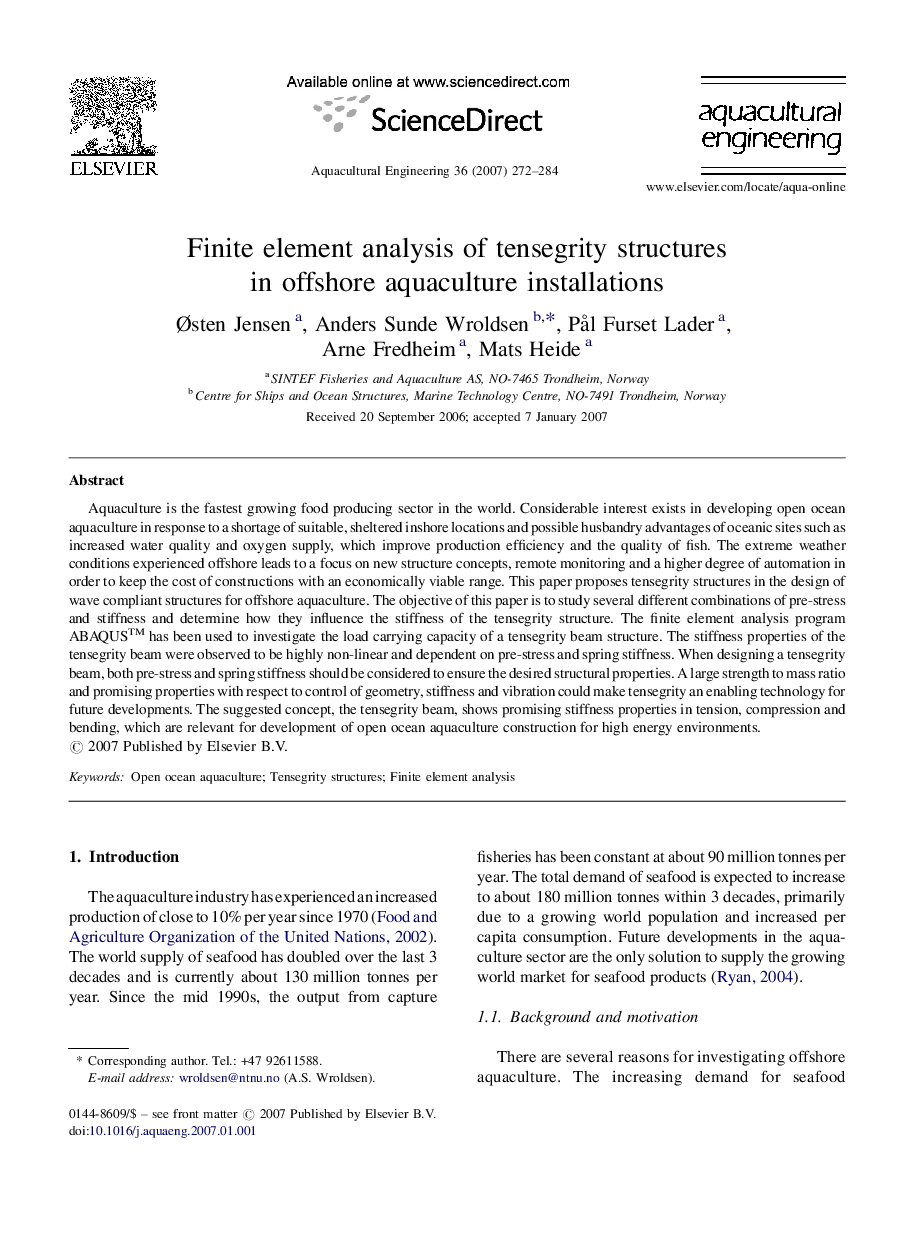| Article ID | Journal | Published Year | Pages | File Type |
|---|---|---|---|---|
| 4527429 | Aquacultural Engineering | 2007 | 13 Pages |
Aquaculture is the fastest growing food producing sector in the world. Considerable interest exists in developing open ocean aquaculture in response to a shortage of suitable, sheltered inshore locations and possible husbandry advantages of oceanic sites such as increased water quality and oxygen supply, which improve production efficiency and the quality of fish. The extreme weather conditions experienced offshore leads to a focus on new structure concepts, remote monitoring and a higher degree of automation in order to keep the cost of constructions with an economically viable range. This paper proposes tensegrity structures in the design of wave compliant structures for offshore aquaculture. The objective of this paper is to study several different combinations of pre-stress and stiffness and determine how they influence the stiffness of the tensegrity structure. The finite element analysis program ABAQUS™ has been used to investigate the load carrying capacity of a tensegrity beam structure. The stiffness properties of the tensegrity beam were observed to be highly non-linear and dependent on pre-stress and spring stiffness. When designing a tensegrity beam, both pre-stress and spring stiffness should be considered to ensure the desired structural properties. A large strength to mass ratio and promising properties with respect to control of geometry, stiffness and vibration could make tensegrity an enabling technology for future developments. The suggested concept, the tensegrity beam, shows promising stiffness properties in tension, compression and bending, which are relevant for development of open ocean aquaculture construction for high energy environments.
